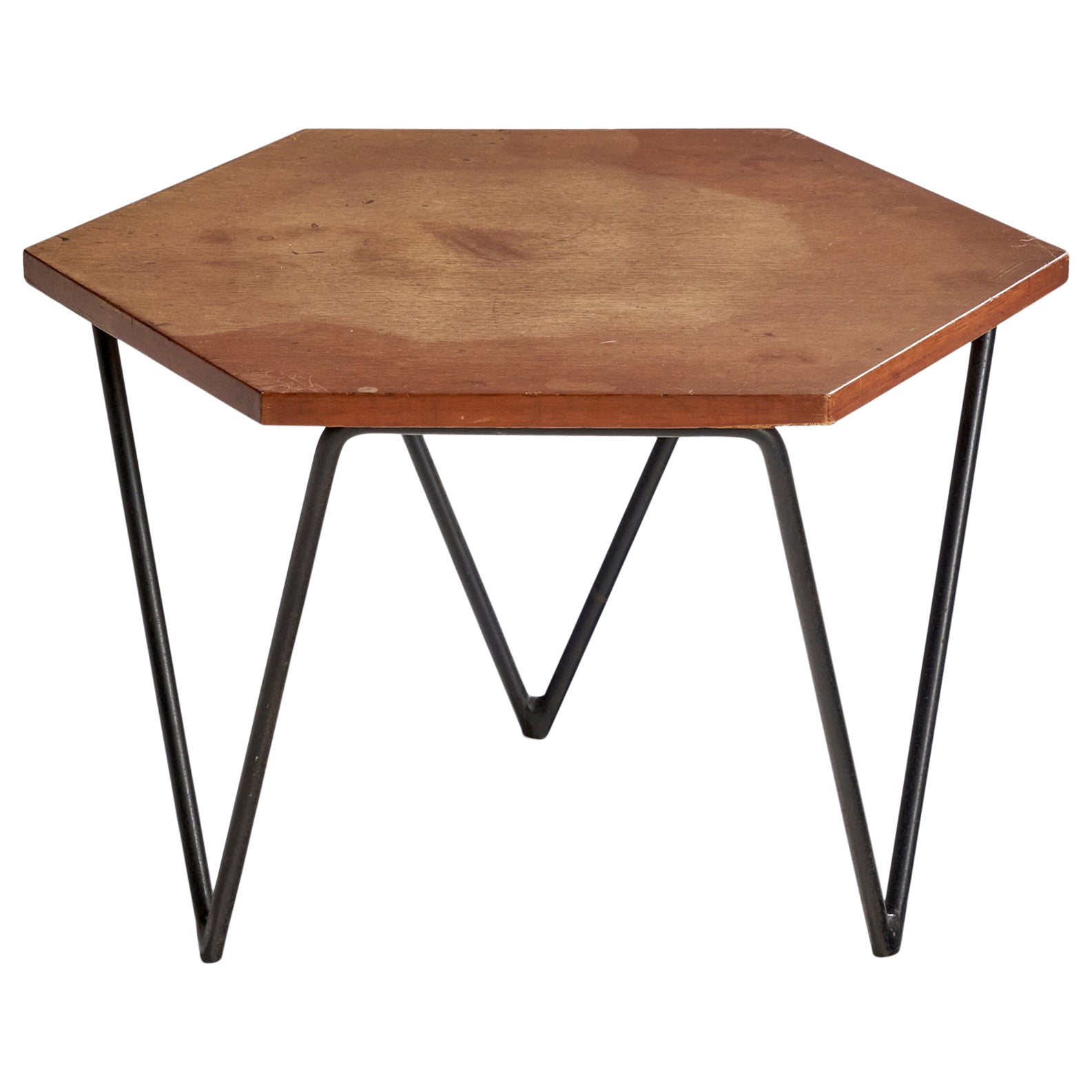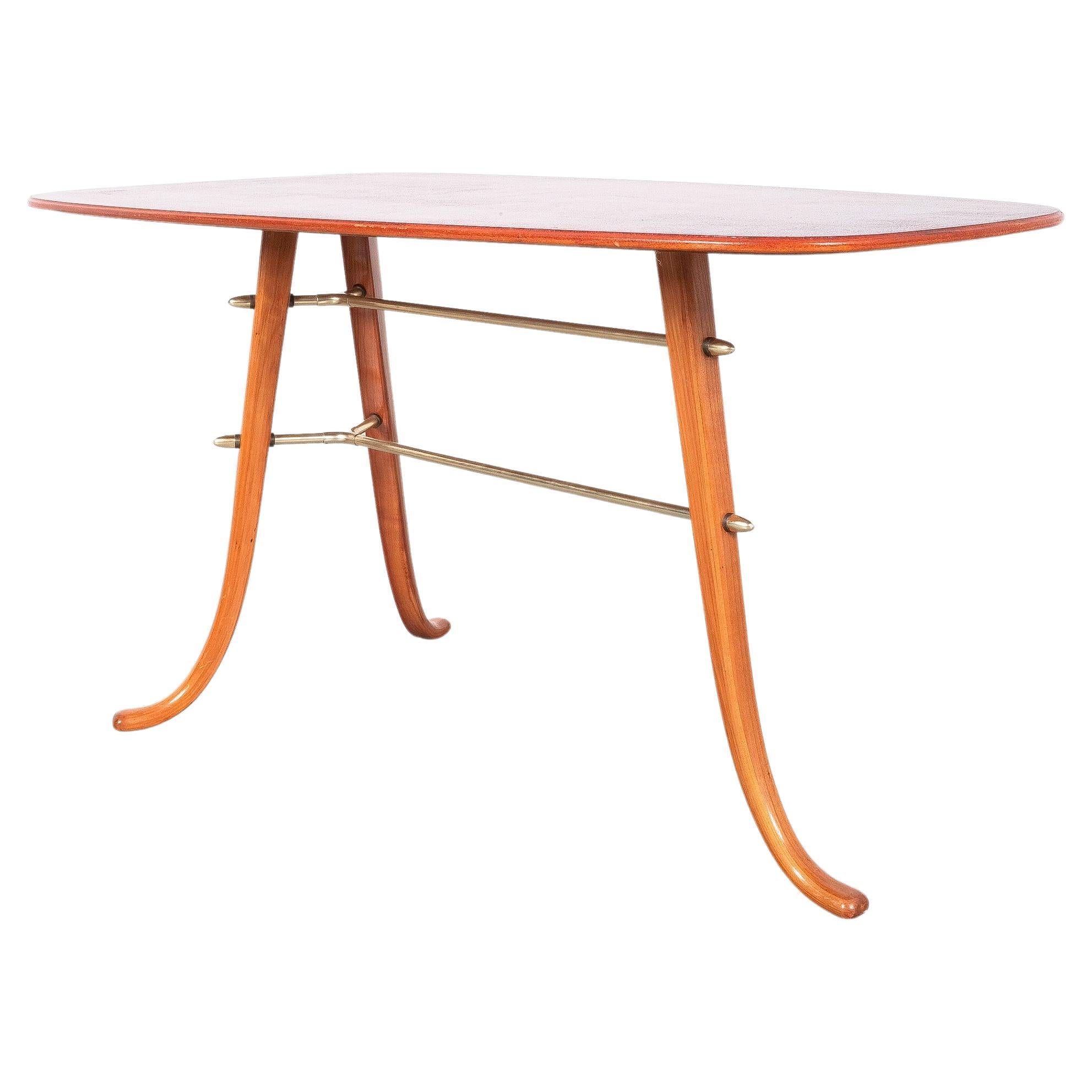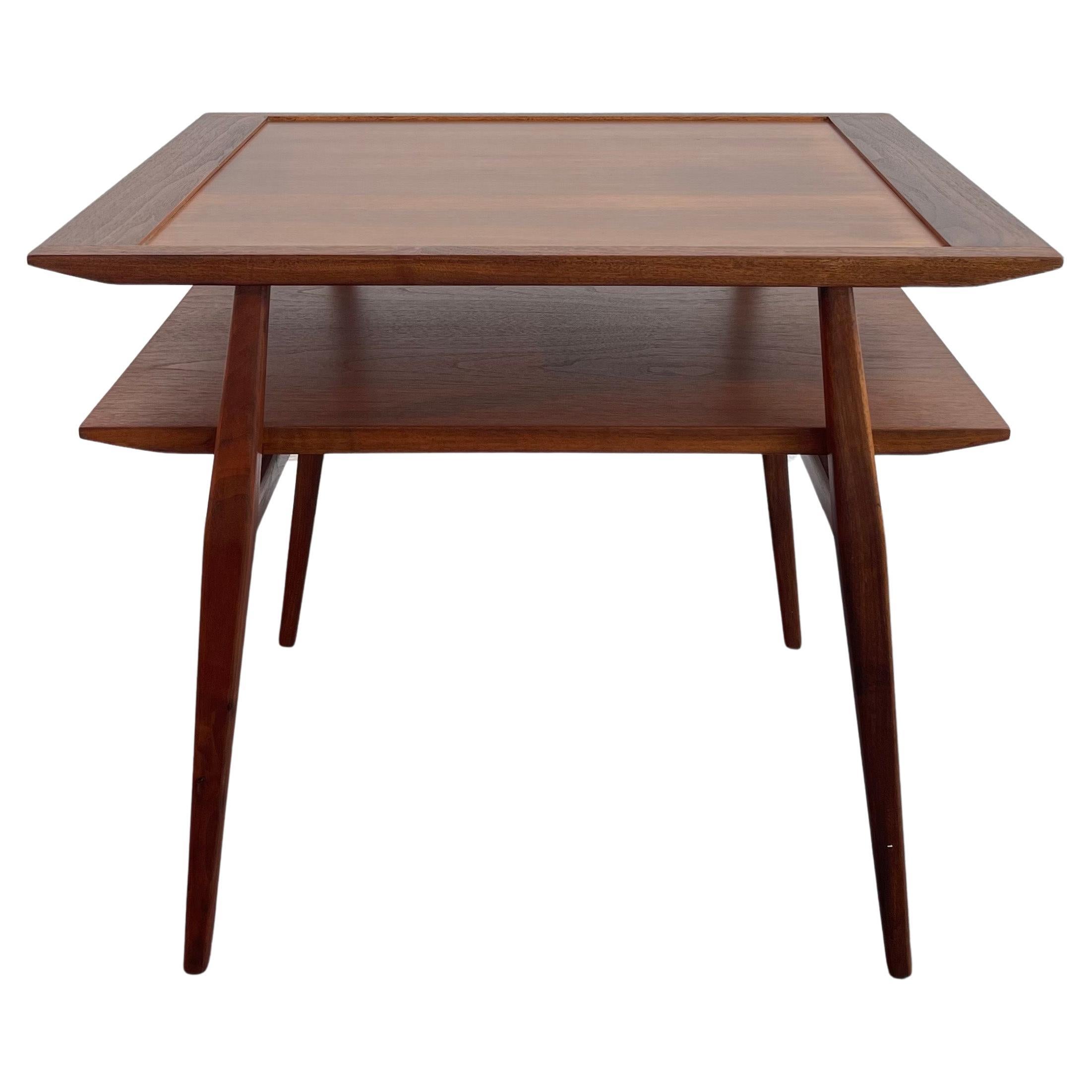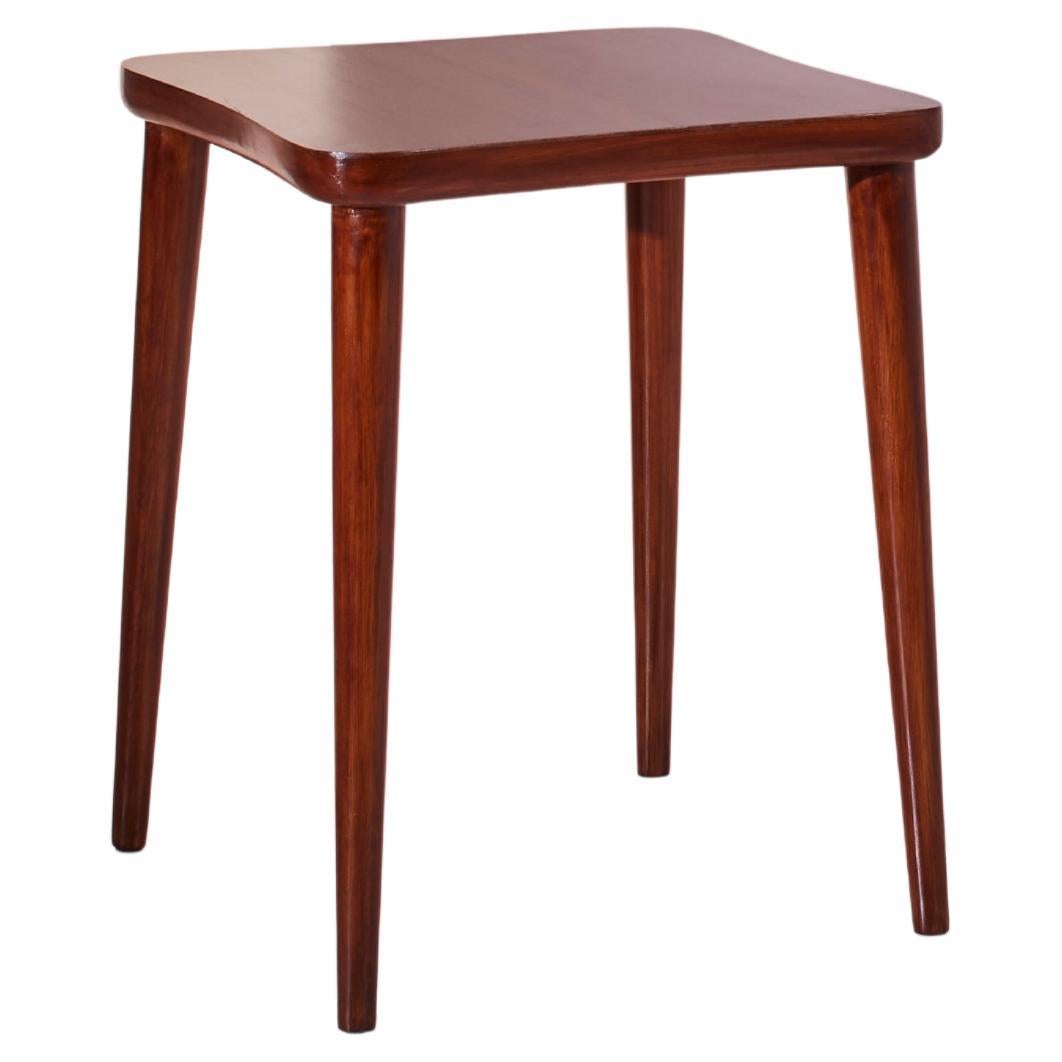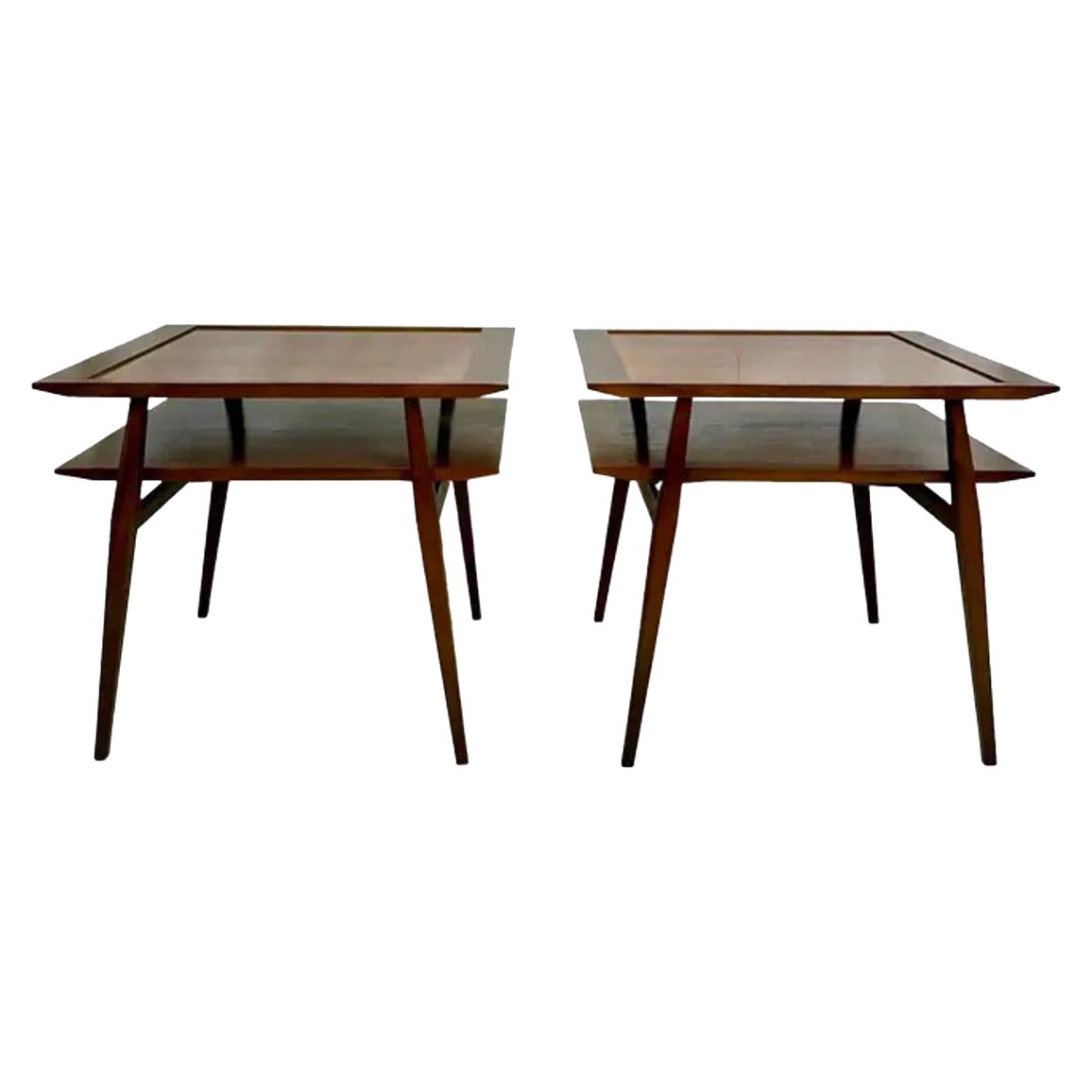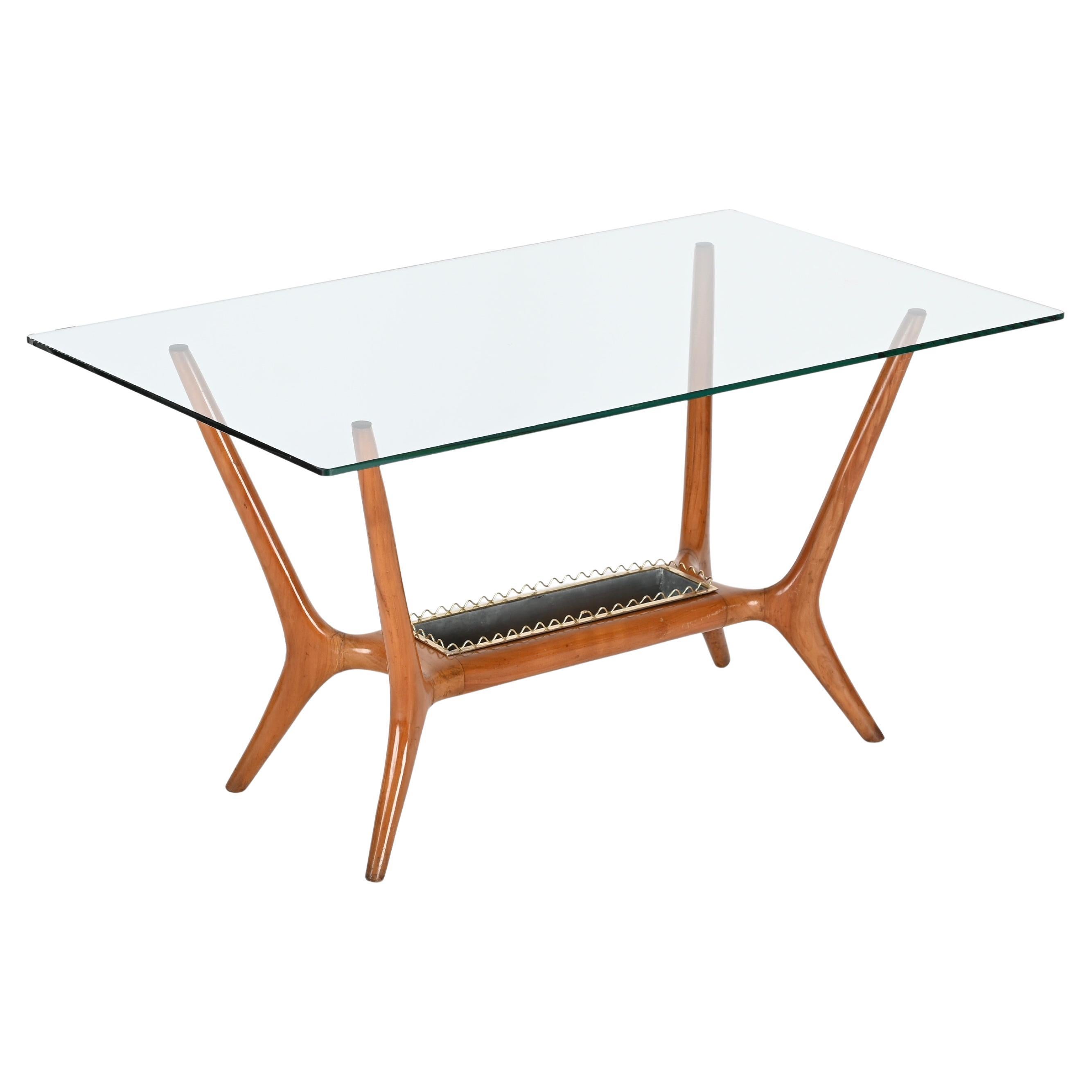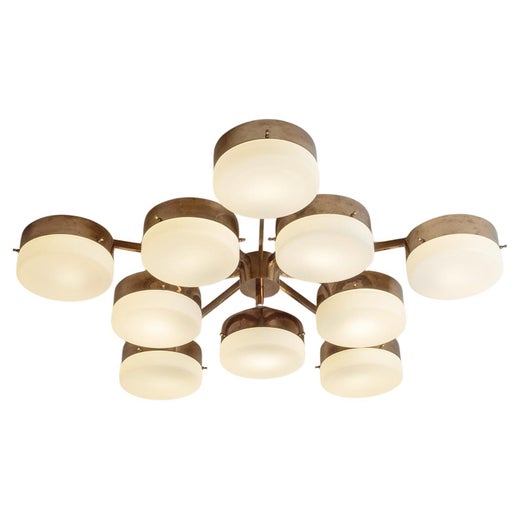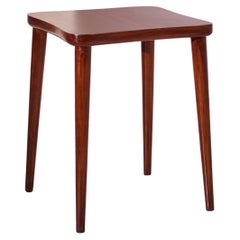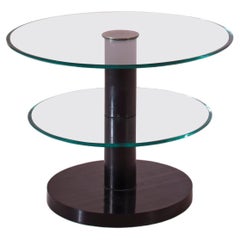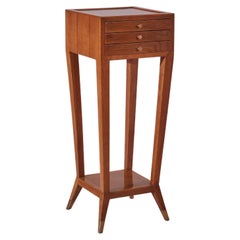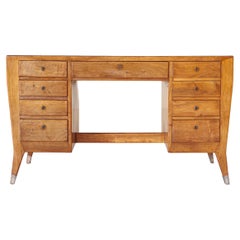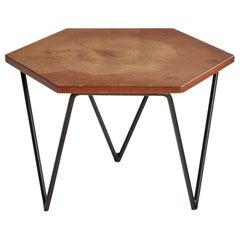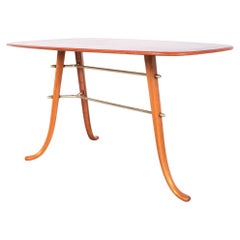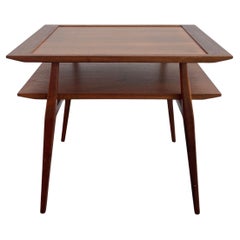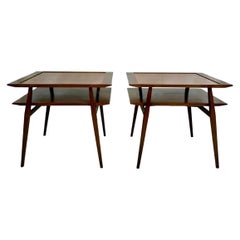Gio Ponti brass, wood, and linoleum side table for the Oceania ship, Italy, 1952
Angaben zum Objekt
- Schöpfer*in:Gio Ponti (Designer*in)
- Maße:Höhe: 80 cm (31,5 in)Durchmesser: 45 cm (17,72 in)
- Stil:Moderne der Mitte des Jahrhunderts (Aus dem Zeitalter)
- Materialien und Methoden:
- Herkunftsort:
- Zeitalter:
- Herstellungsjahr:1952
- Zustand:Neu lackiert. Abnutzung dem Alter und der Nutzung entsprechend.
- Anbieterstandort:Chiavari, IT
- Referenznummer:1stDibs: LU6764245307402
Gio Ponti
Der Architekt, Möbel- und Industriedesigner und Herausgeber Gio Ponti war wohl die einflussreichste Figur der italienischen Moderne des 20. Jahrhunderts .
Ponti entwarf Tausende von Einrichtungsgegenständen und Produkten - von Schränken, Spiegeln und Stühlen bis hin zu Keramiken und Kaffeemaschinen - und seine Gebäude, darunter der bullige Pirelli-Turm (1956) in seiner Heimatstadt Mailand und das schlossartige Denver Art Museum (1971), wurden in 14 Ländern errichtet. Durch Domus, die von ihm 1928 gegründete Zeitschrift , machte Ponti auf praktisch alle bedeutenden Bewegungen und Schöpfer im Bereich der modernen Kunst und des Designs aufmerksam.
Die forschende Intelligenz, die Ponti in Domus einbrachte, spiegelt sich in seinem Werk wider: Pontis Stil ist ebenso vielfältig wie produktiv und lässt sich nicht auf ein bestimmtes Genre festlegen.
In den 1920er Jahren verschmolz er als künstlerischer Leiter der toskanischen Porzellanmanufaktur Richard Ginori alt und neu; seine Keramikformen waren modern, aber mit Motiven aus der römischen Antike verziert. Im Italien der Vorkriegszeit wurde modernes Design gefördert, und nach dem Konflikt fand Ponti - zusammen mit Designern wie Carlo Mollino, Franco Albini, Marco Zanuso - ein aufgeschlossenes Publikum für seine neuartigen, eigenwilligen Arbeiten. Pontis typische Möbelformen aus dieser Zeit, wie der keilförmige Stuhl Distex, sind einfach, leicht kantig und farbenfroh, gleichermaßen elegant und funktional. In den 1960er und 70er Jahren entwickelte sich Pontis Stil weiter, als er biomorphe Formen erforschte und sich die ausdrucksstarken, experimentellen Entwürfe von Ettore Sottsass JR, Joe Colombo und anderen zu eigen machte.
Pontis charakteristisches Möbelstück - mit dem er unter anderem in den Sammlungen des Museum of Modern Art in New York und des Vitra Design Museums vertreten ist - ist der elegante Superleggera Stuhl, der ab 1957 von Cassina hergestellt wurde. (Der Name bedeutet übersetzt "Superleichtgewicht" - in der Werbung war ein Model zu sehen, das es mit einem Finger anhob).
Ponti hatte eine spielerische Seite, die sich am besten in zeigt, einer Collaboration, die er in den späten 1940er Jahren mit dem Grafiker Piero Fornasetti begann. Die Möbel von Ponti waren mit leuchtenden Oberflächen und Fornasettis skurrilen lithografischen Transferdrucken wie Schmetterlingen, Vögeln oder Blumen verziert; das Montreal Museum of Fine Arts besitzt einen Sekretär aus der Serie Architetturra von 1950, deren Vitrinen mit Abbildungen von Gebäudeinnenräumen und -fassaden bedeckt sind. Das größte Projekt von Ponti und Fornasetti liegt jedoch auf dem Grund des Atlantiks: die Inneneinrichtung des 1956 gesunkenen Luxusliners Andrea Doria .
Weithin gelobte Retrospektiven im Queens Museum of Art im Jahr 2001 und im Design Museum London im Jahr 2002 weckten bei Liebhabern modernen Designs erneut das Interesse an Ponti. (Marco Romanellis Monografie, die für die Londoner Ausstellung verfasst wurde, bietet einen guten Überblick über Pontis Werk). Heute wird eine breite Palette von Pontis Entwürfen von versierten Sammlern erworben, die ihren Häusern einen Hauch von italienischem Elan und mühelosem Chic verleihen wollen.
Finden Sie eine Reihe von Vintage Gio Ponti Schreibtische, Esszimmerstühle, Couchtische und andere Möbel auf 1stDibs.
- VersandAngebot wird abgerufen …Versand von: Chiavari, Italien
- Rückgabebedingungen
Mehr von diesem*dieser Anbieter*in
Alle anzeigenVintage, 1940er, Moderne der Mitte des Jahrhunderts, Beistelltische
Walnuss
Vintage, 1930er, Italienisch, Bauhaus, Beistelltische
Metall
Vintage, 1950er, Italienisch, Moderne der Mitte des Jahrhunderts, Beiste...
Messing
Vintage, 1940er, Italienisch, Moderne der Mitte des Jahrhunderts, Schrei...
Messing
Vintage, 1950er, Italienisch, Moderne der Mitte des Jahrhunderts, Couch-...
Glas, Walnuss
Vintage, 1950er, Italienisch, Moderne der Mitte des Jahrhunderts, Schrei...
Messing
Das könnte Ihnen auch gefallen
Vintage, 1950er, Italienisch, Moderne der Mitte des Jahrhunderts, Beiste...
Metall
Vintage, 1950er, Italienisch, Moderne der Mitte des Jahrhunderts, Couch-...
Messing
Mitte des 20. Jahrhunderts, Italienisch, Moderne der Mitte des Jahrhunde...
Walnuss
Vintage, 1960er, Unbekannt, Moderne der Mitte des Jahrhunderts, Beistell...
Walnuss
Vintage, 1950er, Italienisch, Moderne der Mitte des Jahrhunderts, Couch-...
Kristall, Metall, Messing
20. Jahrhundert, Italienisch, Moderne der Mitte des Jahrhunderts, Beiste...
Formica, Holz
